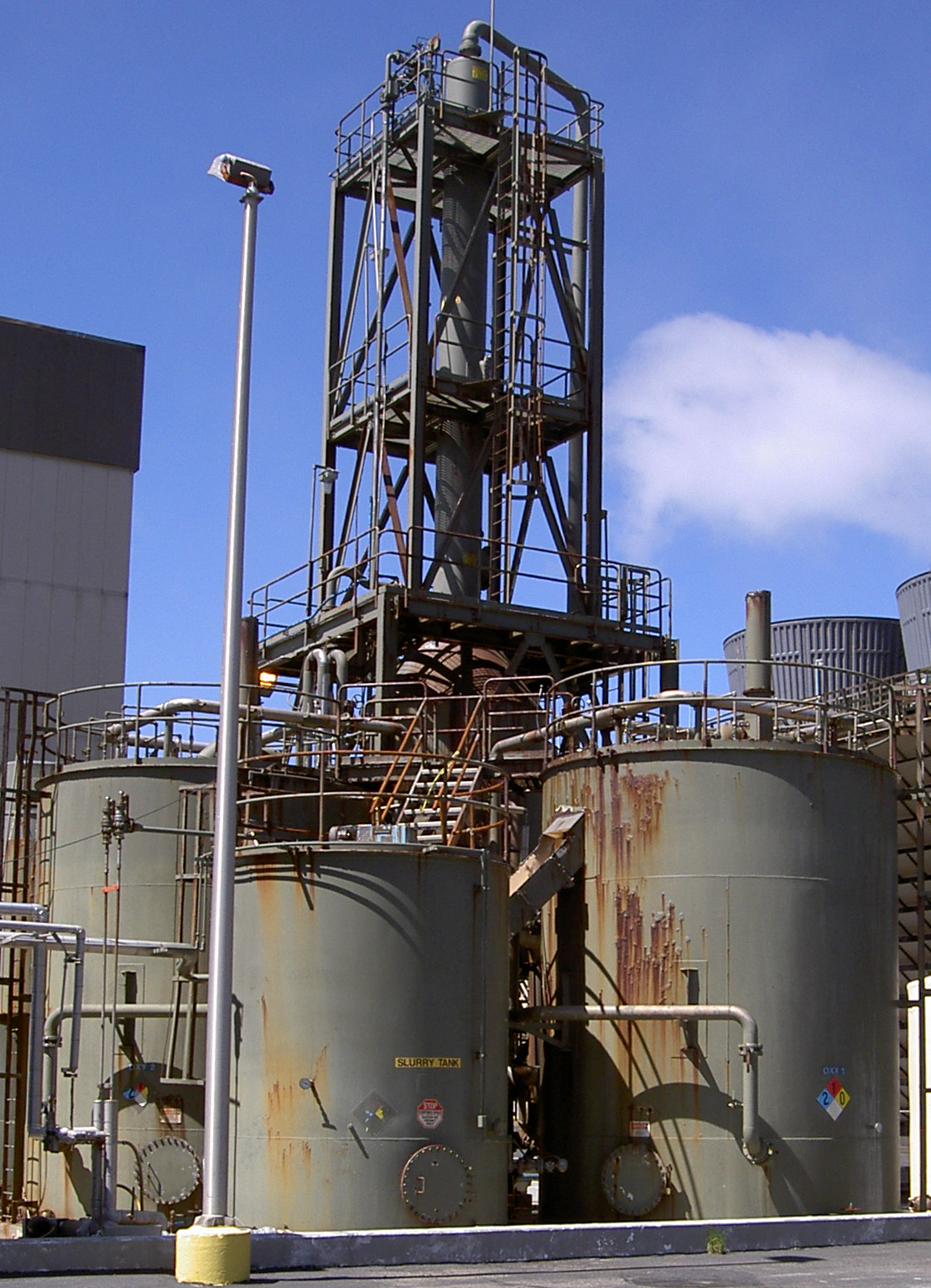Stretford process on:
[Wikipedia]
[Google]
[Amazon]
 The Stretford process was developed during the late 1950s to remove
The Stretford process was developed during the late 1950s to remove
 The Stretford process was developed during the late 1950s to remove
The Stretford process was developed during the late 1950s to remove hydrogen sulfide
Hydrogen sulfide is a chemical compound with the formula . It is a colorless chalcogen-hydride gas, and is toxic, corrosive, and flammable. Trace amounts in ambient atmosphere have a characteristic foul odor of rotten eggs. Swedish chemist ...
(H2S) from town gas. It was the first liquid phase, oxidation process for converting H2S into sulfur to gain widespread commercial acceptance. Developed by Tom Nicklin of the North Western Gas Board (NWGB) and the Clayton Aniline Company, in Manchester
Manchester () is a city and the metropolitan borough of Greater Manchester, England. It had an estimated population of in . Greater Manchester is the third-most populous metropolitan area in the United Kingdom, with a population of 2.92&nbs ...
, England, the name of the process was derived from the location of the NWGB's laboratories, in Stretford
Stretford is a market town in Trafford, Greater Manchester, England, sited on flat ground between the River Mersey and the Manchester Ship Canal; the Bridgewater Canal bisects the town. The town is located south of Manchester, south of Salfo ...
.
The process uses reduction-oxidation (redox
Redox ( , , reduction–oxidation or oxidation–reduction) is a type of chemical reaction in which the oxidation states of the reactants change. Oxidation is the loss of electrons or an increase in the oxidation state, while reduction is t ...
) chemistry to oxidise the H2S into elemental sulfur, in an alkaline solution containing vanadium
Vanadium is a chemical element; it has Symbol (chemistry), symbol V and atomic number 23. It is a hard, silvery-grey, malleable transition metal. The elemental metal is rarely found in nature, but once isolated artificially, the formation of an ...
as an oxygen carrier.
The process earned the NWGB a Queen's Award to Industry
The King's Awards for Enterprise, previously known as The Queen's Award for Enterprise, is an awards programme for British businesses and other organizations who excel at international trade, innovation, sustainable development or promoting oppor ...
in 1968. Although it was used in the gas industry for only a relatively short time, the process was licensed by the NWGB and used successfully in a variety of industries worldwide. At the height of its popularity during the 1970s, there were more than a dozen companies offering the Stretford technology. By 1987, about 170 Stretford plants had been built worldwide, and more than 100 were still operating in 1992, capable of removing 400,000 tons of sulfur per year. The first US plant was commissioned in 1971 at Long Beach, California
Long Beach is a coastal city in southeastern Los Angeles County, California, United States. It is the list of United States cities by population, 44th-most populous city in the United States, with a population of 451,307 as of 2022. A charter ci ...
, to process the gas from offshore oil wells.
See also
* Sour gas *Hydrodesulfurization
Hydrodesulfurization (HDS), also called hydrotreatment or hydrotreating, is a catalytic chemical process widely used to desulfurization, remove sulfur (S) from natural gas and from oil refinery, refined petroleum products, such as gasoline, g ...
References
Notes
Citations
Bibliography
* * {{refend Fuel gas Industrial gases